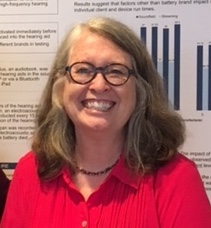 Kris English, PhD
Kris English, PhD
Professor Emeritus of Audiology
The University of Akron
In 1989, Stone and Olswang1 published a seminal article on a universal counseling challenge: recognizing and managing professional boundaries within clinical relationships. Their guidance provided an essential foundation for counseling coursework that would soon be included in new Audiology Doctorate programs.
Since its publication over 30 years ago, much has changed within the field of audiology, including new issues regarding boundaries. Here we review their original contributions, and follow up with one additional boundary consideration: screening for related health and safety issues.
1989: Key Concepts
“Boundaries define relationships that are helpful, realistic, and ethical. In fact, establishing boundaries is a preparatory step to effective counseling” (p. 27).
Stone and Olswang organized boundaries into two easy-to-understand categories:
-
Content/Focus: What we talk about. We are within “focus boundaries” when a
 patient’s emotions, attitudes, or problems are directly related to living with hearing loss or balance issues; e.g., reactions to diagnosis, concerns about recommendations, or uncertainties about shared decision-making.
patient’s emotions, attitudes, or problems are directly related to living with hearing loss or balance issues; e.g., reactions to diagnosis, concerns about recommendations, or uncertainties about shared decision-making. - Interaction Style/ Dynamics: How we communicate, share power and responsibility. We are within “dynamic boundaries” when interactions are mutually respectful, the audiologist is supporting patient autonomy, and the patient is active and empowered.
Also invaluable is advice about “crossed boundaries,” when what we talk about and how it’s talked about is inappropriate or makes us uncomfortable. “Red flags” include a patient who cannot or will not maintain respectful interactions, repeatedly fluctuates in  emotions or behaviors, develops an over-dependence on the clinician, or continues to use offensive language or “overshares”2 after being asked to stop. Clinicians, of course, may also find themselves crossing a boundary, by becoming overly involved with a patient or oversharing about one’s own personal life.
emotions or behaviors, develops an over-dependence on the clinician, or continues to use offensive language or “overshares”2 after being asked to stop. Clinicians, of course, may also find themselves crossing a boundary, by becoming overly involved with a patient or oversharing about one’s own personal life.
How to manage these complicated situations? Trust our instincts! “Persistent uncomfortable feelings are an important clinical signal …[the clinician] does not have to be able to analyze relationships in depth or understand all the dynamics in order to recognize the signs of boundary problems … we may not need consultation [with colleagues or supervisors] to decide that a relationship is beyond his or her boundaries, based on observation, self-evaluation, and level of experience” (p. 29).
The 2020’s: What We Now Also Talk About
When the classic “boundaries” article was published, audiologists in the US lacked professional autonomy and were not expected or prepared to address whole-person care.3 At the time, some activities were rightly considered beyond our boundaries, for instance collecting information on related medical problems, following up on observations of chronic feelings of unhappiness, or screening for patient safety concerns. But things change…
In the mid 1990’s, the Audiology Doctorate (AuD) was established as the entry level degree in the US. A primary goal of the advanced degree was to align our profession with changes in healthcare overall: i.e., to prepare students to serve as full members of  coordinated healthcare teams. These days, we may likely find ourselves broaching/being broached about topics other than hearing and balance but still relevant to patient health and safety. Audiologists now inquire about medications that may adversely interact with hearing and balance4-7 and are typically required by law to intervene with a referral when we perceive indications of self-harm or suicide ideation.8 Institutions and states require us to report concerns about child and elder abuse.9,10 Other developments include screening for vision problems,11,12 cognitive and memory concerns,13-15 depression,16-19 and childhood bullying20 – of course not to diagnose but to assume responsibility for overall patient health and safety, and direct those concerns to relevant support systems. And although not directly related to our care, of course we will listen and support patients who are coping with a death in the family and similar life experiences. Person-centered care has replaced disease- or disorder-centered care.
coordinated healthcare teams. These days, we may likely find ourselves broaching/being broached about topics other than hearing and balance but still relevant to patient health and safety. Audiologists now inquire about medications that may adversely interact with hearing and balance4-7 and are typically required by law to intervene with a referral when we perceive indications of self-harm or suicide ideation.8 Institutions and states require us to report concerns about child and elder abuse.9,10 Other developments include screening for vision problems,11,12 cognitive and memory concerns,13-15 depression,16-19 and childhood bullying20 – of course not to diagnose but to assume responsibility for overall patient health and safety, and direct those concerns to relevant support systems. And although not directly related to our care, of course we will listen and support patients who are coping with a death in the family and similar life experiences. Person-centered care has replaced disease- or disorder-centered care.
Conclusion
Clearly our “what we talk about” boundaries have expanded. Our counseling skills are as essential in these endeavors as with any topic related to audiology. Sensitivity, careful listening, preparedness … we “stay in our lane” while keeping our full attention on the patient-as-person.
References
- Stone JR, Olswang LB (1989). The hidden challenge in counseling. Asha, 31, 27-31.
- Brandt A. (2019, Dec. 2) How to set boundaries in the age of oversharing/ Oversharing has become normalized. Psychology Today.
- Thomas H et al. (2020). Whole-person care in general practice: The doctor–patient relationship. Australian J Gen Practitioners, 49(3), 139-144.
- American Speech-Language-Hearing Association. (2020). Audiology information series: Ototoxic medications.
- Ganesen P et al. (2018). Ototoxicity: A challenge in diagnosis and treatment. J Audiology & Otology, 22(2), 59-68.
- Khoza-Shangase K. (2017). Risk versus benefit: Who assesses this in the management of patients on ototoxic drugs? J Pharmacy & Bioallied Sciences, 9(3), 171–177.
- Wium A, Gerber A. (2016). Ototoxicity management: An investigation into doctors’ knowledge and practices, and the roles of audiologists in a tertiary hospital. South African J Comm Disorders, 63(1), a174.
- Clark J et al. (2021). Heightening our vigilance toward patient well-being. International J Audiology, 60(Suppl. 2), S4-S11.
- Clark JG, English K. (2022). Elder abuse: A need for heightened vigilance. Audiology Today, 34(6), 32-36
- Wesby C. (2007). Child maltreatment: A global issue. Lang, Speech, Hearing Services in Schools, 38, 140-148.
- Busacco D (2010). Dual sensory loss in adults: an overview for audiologists. Audiology Online.
- McGilton KS et al. (2016). Hearing and vision screening tools for long-term care residents with dementia: protocol for a scoping review. BMJ Open, 6:e011945.
- Davis J. (2021). Cognitive screening in audiology: Considerations for nonverbal instructions. The Hearing Journal, 74(5), 34-35.
- Dawes P et al. 2022. Hearing assessment and rehabilitation for people living with dementia. Ear & Hearing, 43(4), 1089–1102
- Shen J et al. (2016). Using cognitive screening tests in audiology. Am J Audiology, 25(4), 319-331.
- Bennett R et al. (2021). Perspectives on mental health screening in the audiology setting: A focus group study involving clinical and non-clinical staff. Am J Audiology, 30(4), 980-983.
- Radloff LS. (1977). The CES-D (Center of Epidemiologic Studies-Depression) scale: A self report depression scale for research in the general population. Applied Psych Measurements, 1, 385-401.
- Radloff LS. (1991). The use of the Center for Epidemiologic Studies Depression Scale in adolescents and young adults. J Youth and Adolescence, 20(2), 149-166.
- Cejas I et al. (2021). Prevalence and anxiety in adolescents with hearing loss. J Otology & Neurotology, 42(4), e470-e475.
- Squires M et al. (2013). Bullying is a safety and health issue: How pediatric audiologists can help. Audiology Today, 25(5),18-26.
